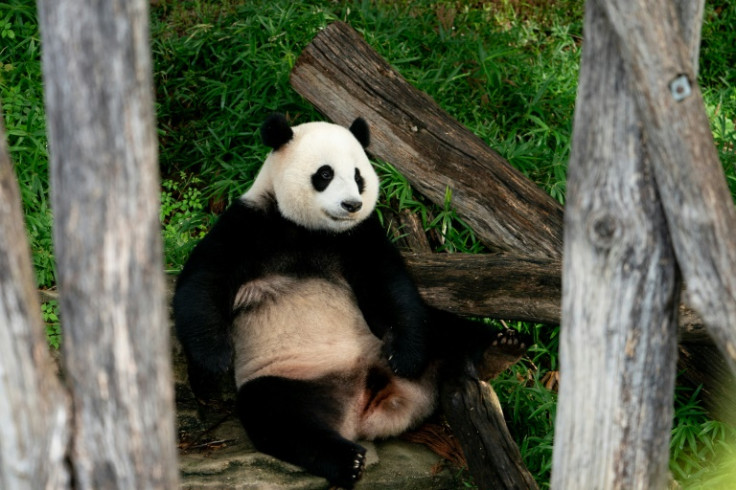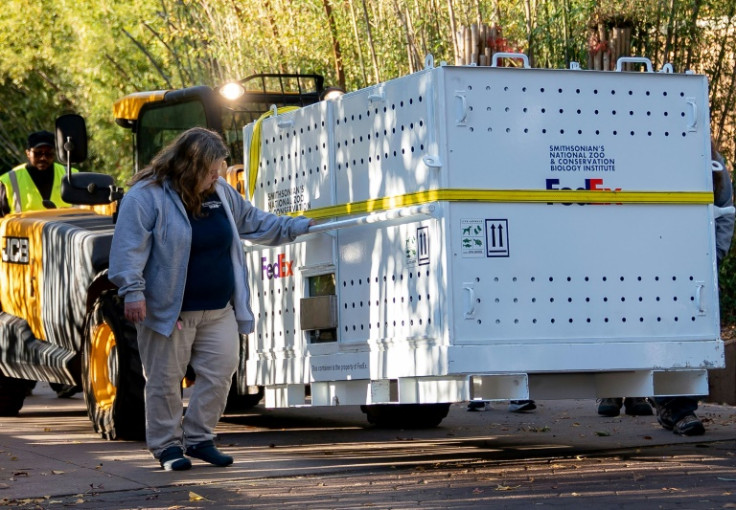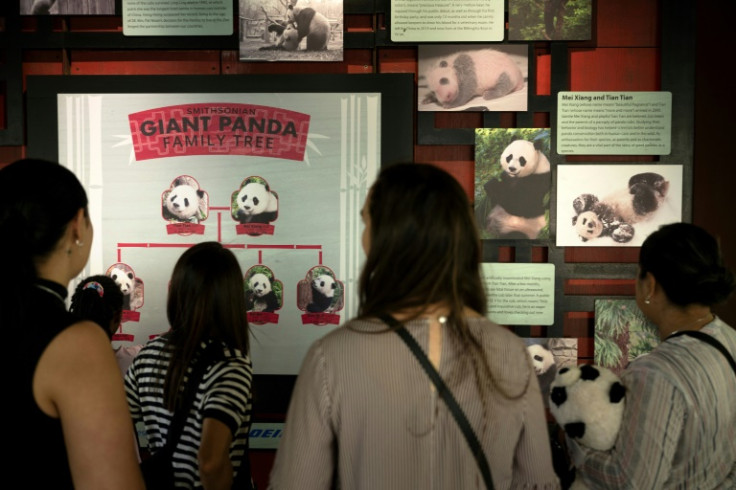Washington's Pandas Return To China Amid Diplomatic Strains

All three giant pandas in the Washington zoo were set to begin a one-way trip back to China on Wednesday, leaving only a few of the cuddly creatures in the United States amid tense diplomatic relations with Beijing.
Now in their mid-20s, pandas Mei Xiang and Tian Tian arrived at the Smithsonian National Zoo in 2000 and quickly became a main attraction.
The duo and their three-year-old cub Xiao Qi Ji -- "Little Miracle" in English -- will board a special cargo plane to begin the 19-hour journey to Chengdu, China, later Wednesday, the zoo said.
Early in the morning, AFP journalists saw the pandas being carried out of the zoo in ventilated crates, along with boxes of apples and piles of tasty bamboo shoots.
While the pandas' departure had been expected due to a longstanding contract agreement, the iconic animals' return was widely seen as a symbolizing US-Chinese tensions.
A first pair of black-and-white furballs arrived from China in 1972 as a gift, following then-president Richard Nixon's historic visit to the Communist nation.
Recognizing the species' uncanny ability to attract fans -- and a source of income for its conservation program -- China continued to loan pandas to Washington and other zoos around the world in a program since dubbed "Panda Diplomacy."
The Chinese government tends to "bestow" pandas on "nations with whom China's relations are on the upswing, as a form of soft power projection," Kurt Tong, a former high-ranking US diplomat and managing partner of the Asia Group consultancy, told AFP.
Relations between Washington and Beijing have hit dramatic lows in the last few years over trade, human rights, export controls, and the status of US-backed Taiwan.
Given the strains between Washington and China, especially over Taiwan, "it is not surprising that Chinese authorities are allowing panda contracts with US zoos to expire," Tong said.
At the Smithsonian zoo, millions of dollars have been spent on the pandas' enclosure and research into the species, especially related to breeding. This includes a popular 24-hour "Panda Cam" to monitor their behavior and health.
The zoo also said it paid $500,000 annually to its Chinese conservation group partner under its most recent contract.
Ahead of the departure, thousands of devoted fans from the around the country flocked to the zoo to say final farewells, many during a week-long "Panda Palooza" event in late September.
Jane Christensen, from the northern US state of Michigan, told AFP during the event that she had driven over 500 miles (800 kilometers) to catch a final glimpse.
She said she has had "panda-monium" for over 50 years, since China's first gift in the 1970s.
The pandas' departure "closes a major chapter of an international animal care and conservation success story," the zoo said in a statement, adding that it "remains committed to continuing its efforts to secure and safeguard a healthy future for giant pandas."
Mei Xiang and Tian Tian have had four surviving cubs since their arrival, which have all been required to go to China after a few years.
After the trio's Wednesday departure, only a few pandas will remain in North America, with no plans yet for replacements.
Zoo Atlanta, in the southern US state of Georgia, plans to send its four pandas to China by late 2024, leaving only the aging Xin Xin in Mexico City as the continent's sole-remaining panda.


© Copyright AFP {{Year}}. All rights reserved.





















